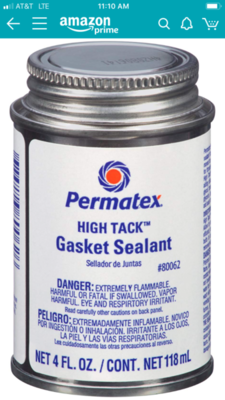Seems as if the old TinyPic hosting strikes again. Since I can't edit the original post (bummer!), following is everything missing from the original post.
The scene you don't want to see twice:
Based on some of the other posters above, Bill's lockring is probably available from other sources as well (eBay seller lorettafillmore above still has them listed 4 years after
@Lelo 500 linked to them, for instance), and depending on who you buy from, you might even get a nice one thrown in with an el-cheapo sender repop.
Either way, all that matters is that you know what the
correct one looks like before you waste time trying to install garbage.
The quality difference should be obvious. Crappy Spectra/Dorman lockring at left, Bill's repop at right.
Crap on top, good one on the bottom. Note thickness.
Incidentally, both probably come from another continent, so there's no point in arguing about offshore garbage - the companies that have them reproduced are the ones responsible for what we get. If you cut corners with budget, copies will be substandard. Spectra/Dorman obviously didn't do their due diligence.
One more photo. Note that those two vents on the gas tank should NEVER be looped in operation; these are your vapor vents.
I did this only upon dropping and lifting the tank, to prevent getting a face full of fuel through these outlets.
Another thing that a few years of learning has taught me: Not all repop tanks have the vent tubes reversed either (one vents from the back of the tank, the other from the front), as has been reported in the past.
I was having some vapor issues (the fuel kept escaping out the short vent) at one point, and hooked it up reversed
based on prior accounts here and on other forums. This was a mistake. It did not cure the problem and I finally made it a point to shine a light into the tank and
verify the length of the vapor lines relative to their position. They were factory correct. No idea when the PO bought the replacement tank for the car.
Moral of this story? The internet was great to detect this problem on one batch. But that's no guarantee of anything other than the advisory that
you should absolutely verify the vent positions on your tank.
Also, the vapor issue went away as soon as I modified the fuel system from the conventional, returnless deadhead system to having a complete vapor return line from the fuel filter under the hood back to the tank.
Thread on this here. Who said it was only for fuel injection?

This was accompanied with a Carter in-line electric fuel pump, but I dare say that had no real bearing on the vapor issue.
-Kurt
P.S.: One last thought for those who keep bringing up sealant: Do you
really want to commit the safety of the hole where your sender sits to a substandard lockring and a bunch of goop? Your sealant may say it's gas resistant, but is it
gap resistant? And can it put up not only with gasoline but the blend of ethanol/gasahol in
your state?
Perhaps most importantly: Are you really willing to recommend the wrong fix to everyone else out there? I'm not. Leave the half-arsed Roadkill "we'll deal with the huge leak of [choose your favorite automotive fluid] when it falls apart and we have no other choice" fixes to the TV shows that can afford to be stupid for entertainment's sake.
It's so easy to do this right that the bass-ackwards methods shouldn't even hear the light of day.

















